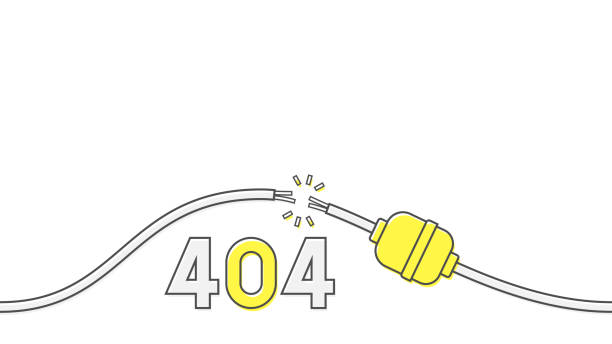The cord-cutting phenomenon is not harmful to cords. However, cable and satellite TV providers have taken a big hit. Millions of Americans say “thanks but no thanks” for the excessive cable channels and the high monthly payments. This new generation of media users is known as “cord-cutters.”
What are cord-cutters? Cord cutters are television viewers who have abandoned their cable TV provider in favor of TV streaming services. They’re increasing in numbers. A 2021 Forbes report states that the number of cord-cutters has tripled in only seven years.
It is reasonable to ask, Why? With approximately 50.4 million 1 cord-cutters making waves in the United States, the question arises How ? This blog will explore the reasons behind this decision and what it means for marketers, who now have to rethink the way they approach their audiences.
Cord cutting: The Cable Alternative
While cord-cutters are certainly destroying the TV industry as we know, they haven’t been the only ones involved. Other people are also opting out, and this is causing the cable and satellite subscription prices to drop even more.
Cord cutting buddies? Cord cutters and cord niet.
Cord Trimmers Instead of cutting ties completely, cord trimmers prefer to minimize their monthly cable or satellite costs by reducing the channels and services that they do not need or desire. Cord trimmers might opt for a smaller channel list, or they may be cutting costs while adding a streaming subscription to their cable subscription.
Cord Nevers – This anti-cable community is made up of 31 million Americans, most of whom are younger. 90% of Americans aged between 25 and 34 prefer digital streaming services to traditional cable packages.
The American TV audience is reaping many benefits from cord-cutting, whether it’s to save money or enjoy the convenience of watching their favorite shows on demand. Continue reading to learn more.
Cord cutting benefits
What is the cause of the cable boycott? There are many reasons cord cutters and cord trimmers are moving away from traditional TV viewing.
Here is a breakdown on what some of the main factors could be that are contributing to this trend.
Cost-efficiency- Financial savings are one of the main reasons cord-cutters choose to do away with their cable and satellite subscriptions. The average cable bill is anywhere between $45 and $130 per month, depending on the provider.
If you are a math genius or not, you can easily see the savings you could make by switching to a streaming TV package.
Multiway streaming – Another advantage of streaming services is that they allow you to watch shows and movies on a wide range of devices. It allows you to have everyone in the house tune into their favorite channels at any time without having to argue over who has control of your remote. Downloadable series and movies are also available for entertainment on the go, even if you’re not at home or can’t connect to WiFi.
Wide range of services – Cord cutters find it less appealing to have access to hundreds of channels via cable than to be able to watch their favorite shows with the click of a single button. The diverse range of streaming TV services is a great alternative to broadcast television. Cord-cutters don’t have to pay for channels that they rarely watch. They can choose their favorite options from Netflix, Hulu and Disney+.
The algorithms that power several streaming services allow for a level of customization, which some users find appealing. Users can save time by tailoring their menus to reflect viewing habits and trends.
Local Access- Some TV viewers may hesitate to cancel their cable or satellite subscriptions because they are worried about losing local channels and sports. Cord-cutters can take advantage of services like Hulu + Live TV, which bundles channels such as ABC, CBS and FOX. This makes it easier to switch to a cord-free service without having to sacrifice the TV they love.
What cord cutting means for marketing
Cord-cutting has brought about some major changes in marketing and advertising. It offers TV viewers lower monthly costs and more convenient binge-watching.
Due to the decline in cable and satellite television, advertisers must find more effective ways to reach their target audiences via streaming services.
What is the answer? OTT and CTV ads.
OTT is digital video content which viewers can access from a variety of devices. You may be familiar with Netflix, Hulu, or Amazon Prime Video, but you might not know that these services fall under OTT media.
CTV, or connected TV, is similar to OTT but relies on a special device to display video content if the TV doesn’t have built-in capabilities. CTV devices are Roku, Chromecast, and Amazon Fire TV. They also include Apple TV and Xbox.
Media buyers must now use other options to promote their brands, such as interactive midstream ads and in-stream placement ads.
How To Profit From Cord-Cutting Trends
Digital marketing strategists may be surprised to find that it is more effective than traditional TV advertising.
How marketers are leveraging OTT and CTV ads.
Reach a younger, more targeted audience_ Brands looking to take advantage of the OTT and CTV trends can use these platforms to reach a younger audience. The younger generation is responsible for the majority of cord-cutting trends. Companies hoping to reach a younger audience may find that this advertising channel is more effective.
It also allows media buyers to gather valuable information on audience behavior, TV viewing times, and viewer interest, allowing for more precise targeting of their ads.
Get insight into the performance of your ads. Marketers can use CTV and OTT ads to better understand how their ads perform.
Businesses can use the data they collect to optimize their campaigns and make necessary adjustments.
Spend your marketing dollars more effectively. Marketing teams can make better advertising decisions by combining audience insights with unique CTV and OTT Key Performance Indicators (KPIs). They can also spend their marketing dollars in a more efficient manner.
If you can place your ads in front of people who are likely to be interested, your campaign is more likely to yield a high return on investment.
What is doing to adapt your brand to the changing patterns of TV viewing? You may want to consider switching to OTT or CTV advertising if you haven’t already. Learn more by reading our guide on Viewership.




















Comments